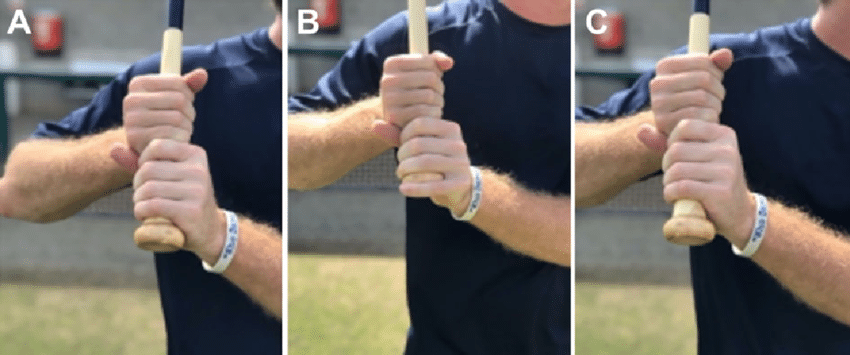When it comes to choosing a baseball bat grip, players often overlook one of the most important elements that can impact their swing: the thickness of the grip. In particular, two popular sizes dominate the market—1.1mm and 1.8mm. These grips offer different experiences, and understanding the differences is crucial for performance, especially at a high level of play. National-level athletes often have distinct preferences based on playing style, feel, and desired control.
In this article, we’ll dive deep into the pros and cons of both grip sizes, how they influence swing mechanics, and what thickness is most often recommended by elite players. Whether you’re trying to find the best bat grip for control or simply want a complete baseball grip size guide, this comparison will give you the insight you need.
The Role of Grip Thickness in Performance
A baseball bat grip is more than just a comfort accessory—it plays a significant role in bat control, feedback, and power transfer. Grip thickness, in particular, can affect how tightly a player holds the bat, how much vibration is absorbed on contact, and even how the bat moves through the zone.
Thinner grips, like the 1.1mm bat grip, provide a closer feel to the bat’s handle. This leads to greater feedback, which many advanced players prefer for fine-tuning their swing. On the other hand, thicker grips, such as the 1.8mm bat grip, offer more cushioning. This added thickness helps dampen vibrations and reduces sting on mishits, making it a preferred choice for players prioritizing comfort or recovering from hand injuries.
From Little League to the Major Leagues, grip preference can evolve. Young players may begin with thicker grips due to comfort, while more experienced players often move to thinner grips as they seek better responsiveness and control. However, there’s no one-size-fits-all answer, which is why understanding the 1.1mm vs. 1.8mm debate through the lens of national-level recommendations is vital.
Why Many Elite Players Choose 1.1mm Grips
At the national level, where players face the best pitching and demand precision in every at-bat, the 1.1mm bat grip often takes center stage. The thinner profile allows hitters to have a more direct connection with their bat, leading to greater responsiveness and tactile feedback.
The 1.1mm bat grip pros start with increased bat control. Since there’s less material between the hand and the bat, players can make micro-adjustments more easily during their swing. This is especially important for contact hitters or those who rely on bat speed and placement over brute force. Many national-level players, especially in collegiate and professional settings, report feeling more “locked in” with a thinner grip.
Another key advantage is weight savings. While the difference is marginal, a thinner grip can reduce the overall weight of the bat by a few grams. In high-performance environments, even a slight weight shift can impact swing speed and bat path efficiency.
However, 1.1mm bat grip cons do exist. The lack of cushioning means less shock absorption on poor contact. This can lead to more hand sting, especially in colder temperatures. For some players, the trade-off between control and comfort isn’t worth it. Players with hand injuries or sensitivity may also find 1.1mm grips too harsh.
Still, in surveys and interviews with elite players, the majority cite the 1.1mm grip as the best bat grip for control, with its balance of responsiveness and feedback often outweighing the downside of increased vibration.
The Comfort-First Case for 1.8mm Grips
While thinner grips dominate among players looking for a more technical feel, the 1.8mm bat grip has a strong following—particularly among power hitters and those looking for added comfort during long seasons. The 1.8mm bat grip pros are centered around its padded design, which helps absorb vibrations and reduces fatigue.
For players who take hundreds of swings a week, the 1.8mm grip offers relief from the repeated impact forces traveling through the bat. This can be especially beneficial during colder months, when sting from mishits is more intense. The extra cushion provides a soft, forgiving hold that many players grow to appreciate over time.
Additionally, the thicker grip slightly increases the diameter of the bat handle, which can be advantageous for players with larger hands or those who prefer a more secure, ergonomic feel. This can lead to a more relaxed grip, potentially improving bat path consistency and reducing tension in the forearms during swings.
However, 1.8mm bat grip cons primarily involve a reduction in direct feedback. The extra layer dampens sensation, which means it can be harder to diagnose mechanical issues or feel slight mishits. It can also slightly alter bat balance and swing weight, which may be a downside for players seeking maximum precision.
Despite these trade-offs, some national-level players—especially those who prioritize durability and comfort—opt for the 1.8mm grip, particularly during colder weather or when nursing minor injuries. It’s often cited as the best bat grip wrap for baseball when comfort and longevity are top priorities.
The Science of Feel: Grip Size and Swing Mechanics
Choosing between 1.1mm and 1.8mm grips isn’t just about comfort—it can directly influence swing mechanics and performance outcomes. The baseball grip size guide used by coaches and players often factors in biomechanics, hand size, and swing objectives.
With a 1.1mm grip, the reduced thickness translates into a more dynamic wrist action. Players can load and release more efficiently, which benefits those focusing on quick hands and high bat speed. It also allows the fingers to wrap more completely around the bat, enabling subtle grip adjustments in the box. This is especially important for situational hitters who adapt their approach based on pitch type or count.
Conversely, the 1.8mm grip introduces a marginal delay in wrist motion due to its bulkier profile. This can be beneficial for players who need to slow down their swing to maintain timing or stay back on off-speed pitches. The added thickness also reduces the likelihood of over-gripping, which can help prevent tension-related mechanics breakdowns.
From a psychological perspective, thicker grips can provide a sense of security. Some players report feeling more “in control” with a thicker handle, even if it reduces tactile feedback. This confidence boost can translate into better plate discipline and more consistent results.
Ultimately, the best bat grip for control will depend on each player’s mechanics, mental approach, and physical needs. That’s why many elite players experiment with both sizes before settling on a preference. Some even switch grip thicknesses mid-season, depending on their health, weather conditions, or performance trends.
So, What Thickness Do National-Level Players Recommend?
When consulting with national-level coaches and players, a clear pattern emerges: the 1.1mm grip is most commonly recommended for those looking to maximize control, feedback, and swing precision. It aligns with the high-performance goals of elite athletes who value every bit of tactile information during their swing.
Yet, the 1.8mm grip continues to find favor among those prioritizing comfort, especially over long seasons or in cold climates. It is not unusual for professional players to switch between the two sizes depending on context—training versus competition, early season versus playoffs, or injury recovery periods.
If you’re developing your swing mechanics and want maximum feel, the 1.1mm grip will likely be your best bet. It’s widely regarded as the best bat grip for control among college and pro-level athletes. However, if you’re recovering from hand pain or simply prefer a smoother, cushioned feel, the 1.8mm grip offers unbeatable comfort without compromising too much on performance.
Conclusion
Choosing between the 1.1mm and 1.8mm grips is a matter of personal preference, but it’s a decision that should be informed by your playing style, performance goals, and physical condition. National-level players lean toward thinner grips for precision and feel, but there’s no shame in choosing a thicker grip if it enhances your comfort and confidence. The key is to experiment, evaluate, and find the grip that complements your game—because sometimes, the smallest change can make the biggest difference at the plate.






